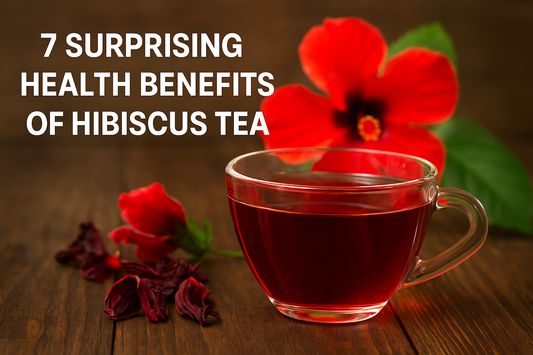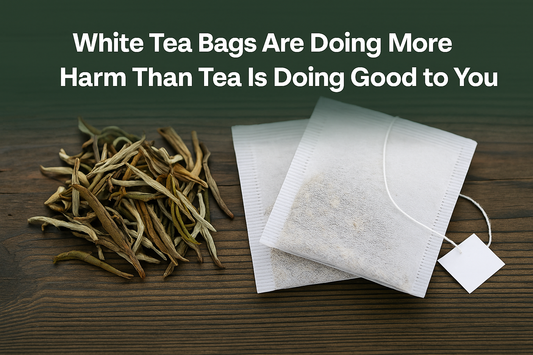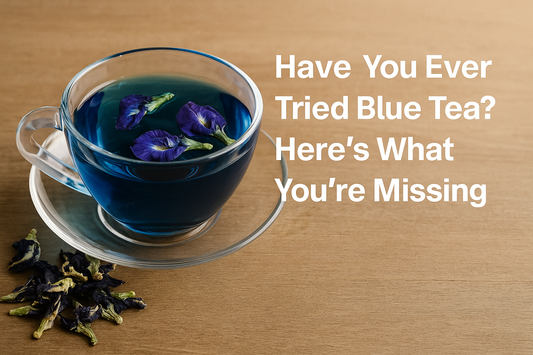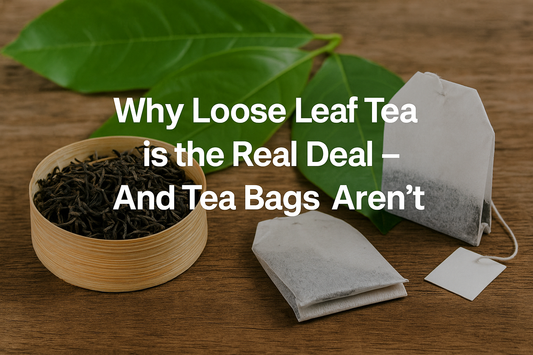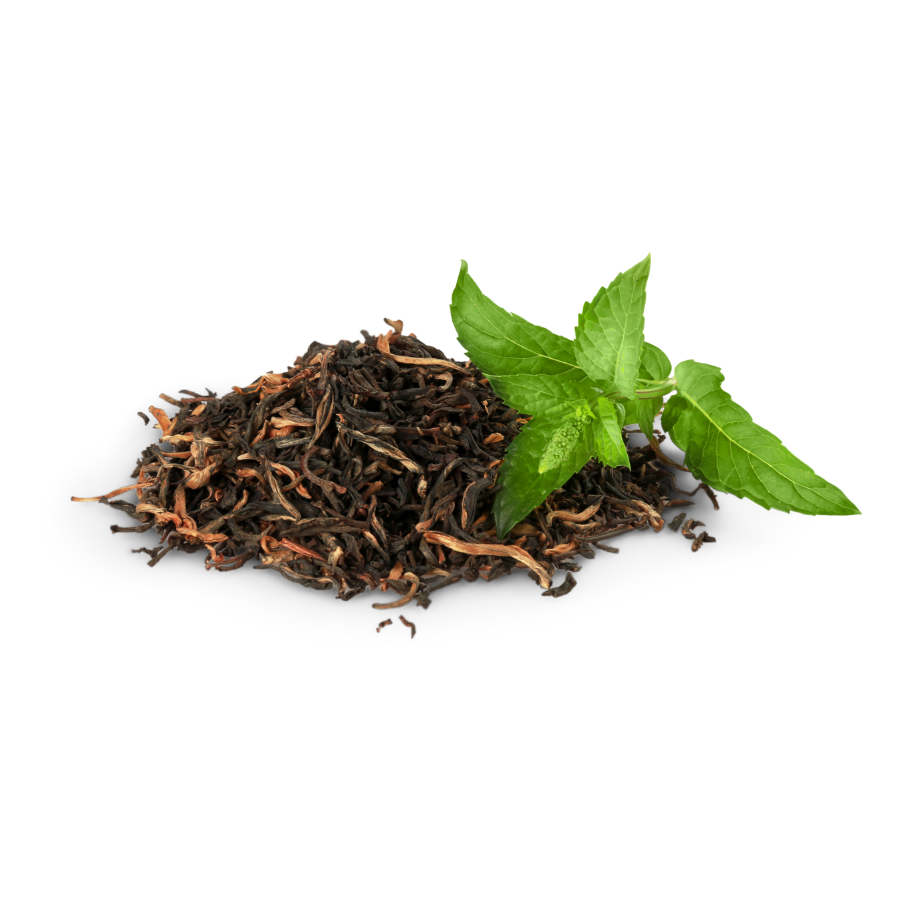White Tea Bags Are Doing More Harm Than the Tea Is Doing Good to You
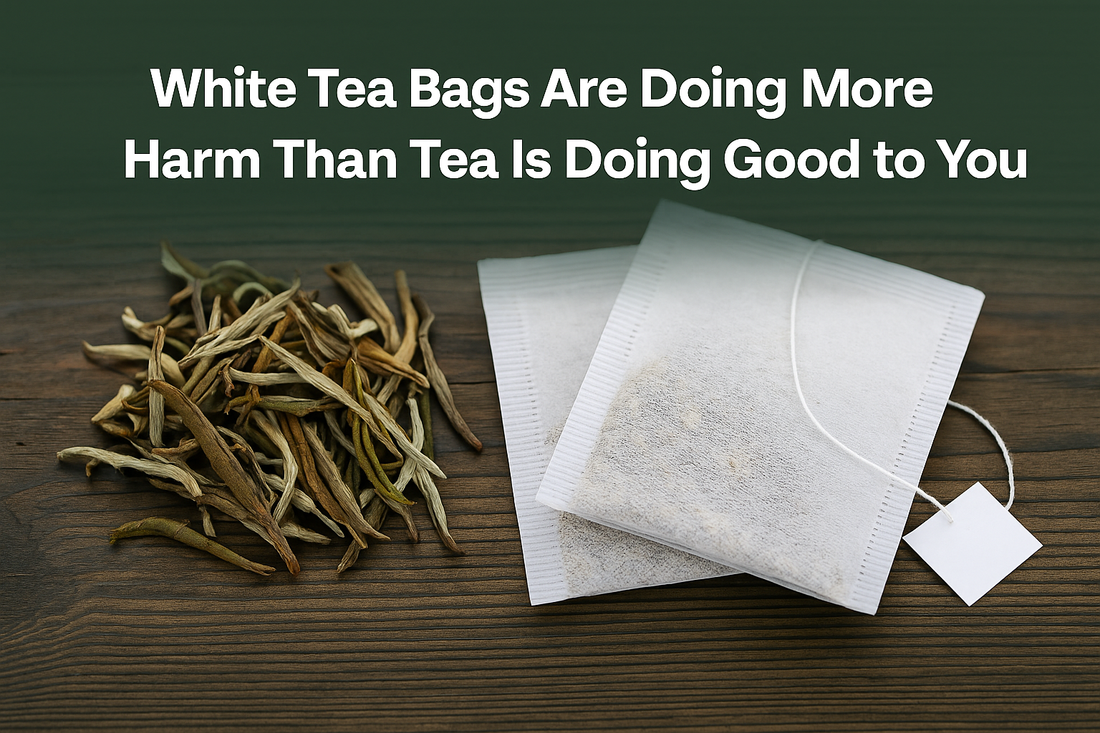
The Illusion of Purity – Why "White" Doesn’t Always Mean Better
White tea has long enjoyed the reputation of being the gentlest, purest, and most antioxidant-rich member of the tea family. Delicate buds, carefully harvested at dawn, minimally processed—sounds like the ultimate wellness drink, right?
That’s the theory. But in reality, most people aren’t sipping that romantic version of white tea.
Instead, they’re reaching for commercially packaged tea bags labeled “White Tea,” unaware of what’s actually inside. These bags often contain broken leaves, leftover fannings, or even tea dust—far removed from the premium loose-leaf white tea they believe they’re drinking. The subtle taste? Gone. The antioxidant power? Mostly degraded. The elegance of white tea? Diluted into disappointment.
In fact, over-processing and poor storage of bagged white tea strips it of the very compounds—like catechins and polyphenols—that make it beneficial in the first place. You’re left with the name, but not the nature.
Microplastics, Bleaching, and Chemical Residue
Let’s talk materials. Many white tea bags on the market aren’t just filled with sub-par tea—they’re wrapped in synthetic, plastic-based mesh. And when you pour boiling water over these bags, you could be steeping microplastics right into your cup.
Studies have shown that nylon and PET (polyethylene terephthalate) tea bags can shed billions of microplastic particles when exposed to heat. Even traditional paper tea bags aren’t entirely safe—many are bleached or reinforced with chemical glues and sealants.
These compounds don’t just ruin the purity of your brew—they can potentially interfere with hormone balance, gut health, and long-term wellness when consumed regularly.
So, while you sip your “healthy” white tea, thinking you’re doing your body a favor, you might actually be ingesting more toxins than antioxidants.
What Real White Tea Looks (and Tastes) Like
Authentic white tea isn’t mass-produced—it’s handpicked. It’s made from the young, unopened buds of the Camellia sinensis plant, sometimes with a few delicate leaves attached. These buds are dried naturally, retaining their silvery-white fuzz, subtle floral aroma, and light golden hue when brewed.
The taste? It’s a revelation. Real white tea is soft, smooth, and whisper-light with layered notes—think honeysuckle, fresh hay, and melon. It’s a slow, meditative experience. You don’t rush white tea. You let it unfold.
But here’s the catch: this kind of quality cannot be crushed into a tea bag.
If your white tea tastes bland, papery, or too sharp—it’s likely been over-processed, poorly stored, or never real to begin with. The difference between loose-leaf white tea and bagged white tea is the same as the difference between freshly baked sourdough and white bread out of a packet.
Better Alternatives – What to Look for Instead
So what can you do if you want the real benefits of white tea—or any herbal or traditional tea?
-
Choose Loose-Leaf Over Bags: Always. Look for visible buds and whole leaves. Avoid powders, dust, and over-processed bags.
-
Transparent Sourcing: A good tea brand will tell you where their leaves come from, when they were harvested, and how they were processed.
-
Unbleached, Natural Packaging: If you must use bags, opt for brands that use unbleached paper and natural string without plastic glue or staples.
-
Trust the Brew: A good white tea will never turn bitter. It should steep to a pale gold and carry a sweet, earthy aroma—not astringency or sharpness.
At Dekay, we focus on purity, ritual, and ingredient integrity. Our blends favor the real leaves, handcrafted infusions, and no-compromise packaging—so what you sip is exactly what nature intended.
Don’t Be Fooled by the Bag
The truth is harsh, but necessary: convenience often comes at the cost of quality. The very act of putting white tea into a bleached bag and boxing it for long shelf life already contradicts everything white tea is supposed to be.
So next time you think you're choosing health, purity, or elegance—pause and peek inside the bag.
Or better yet, toss it and go loose.
Your body, your senses, and your tea ritual deserve the real thing.

